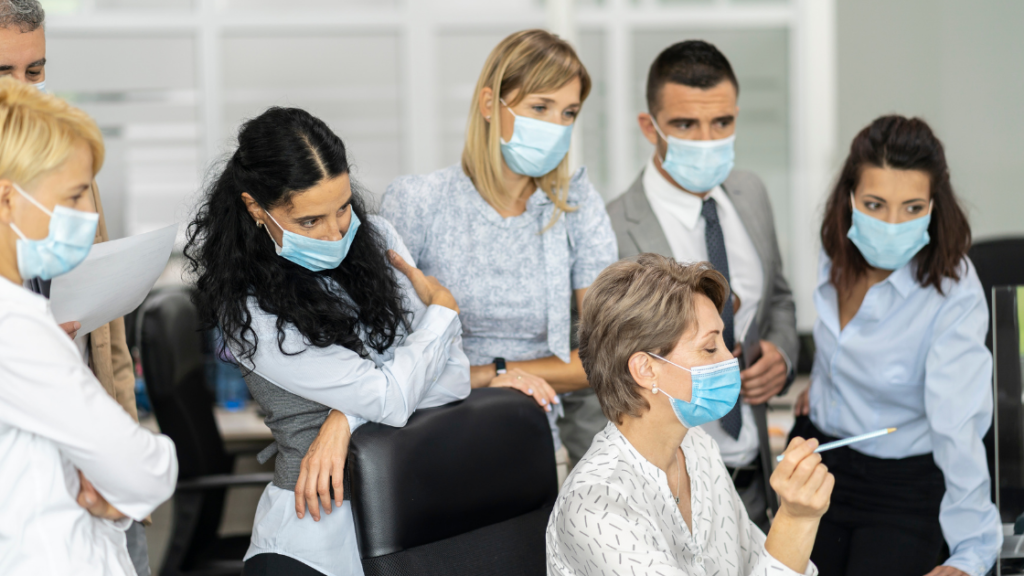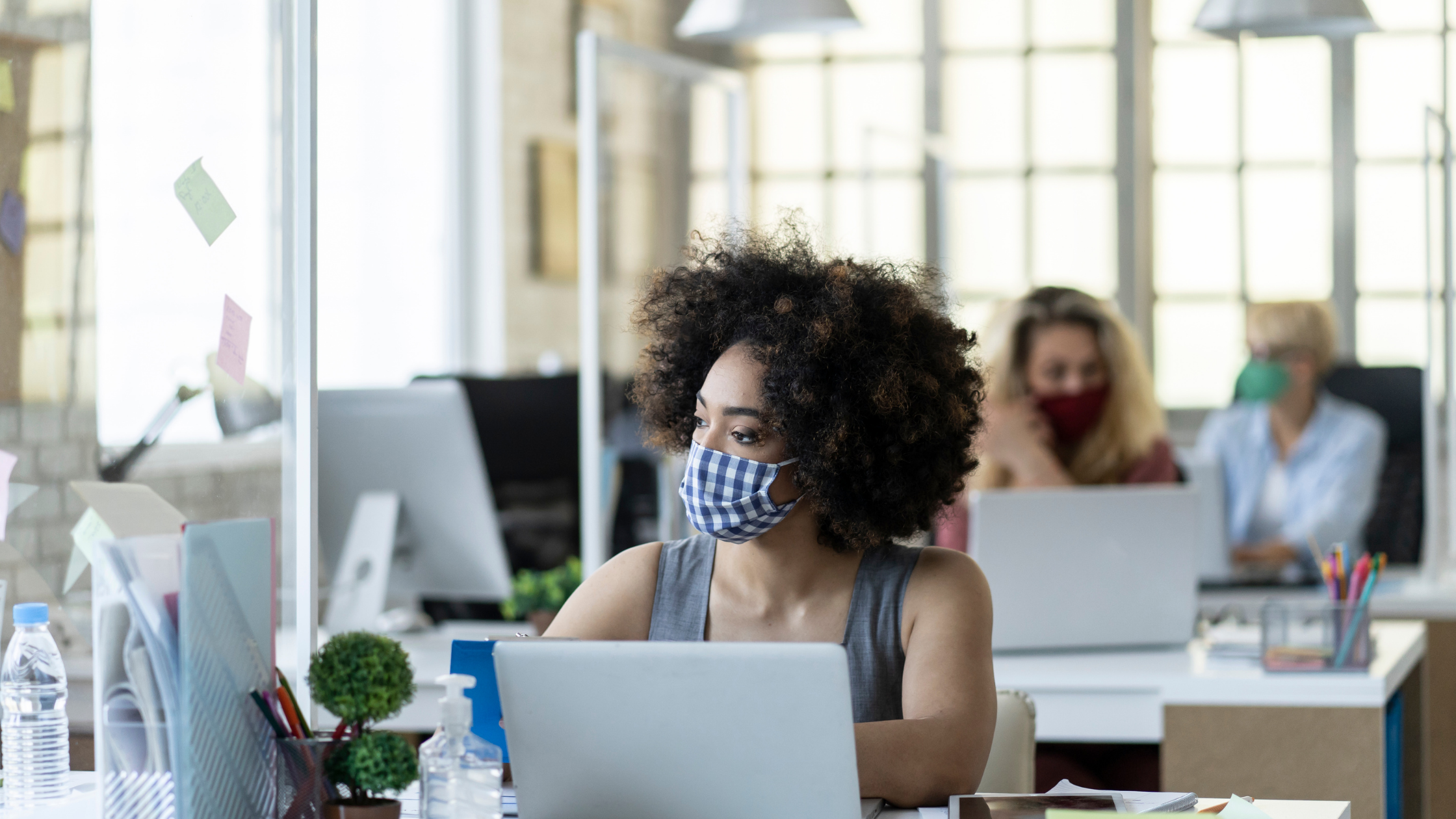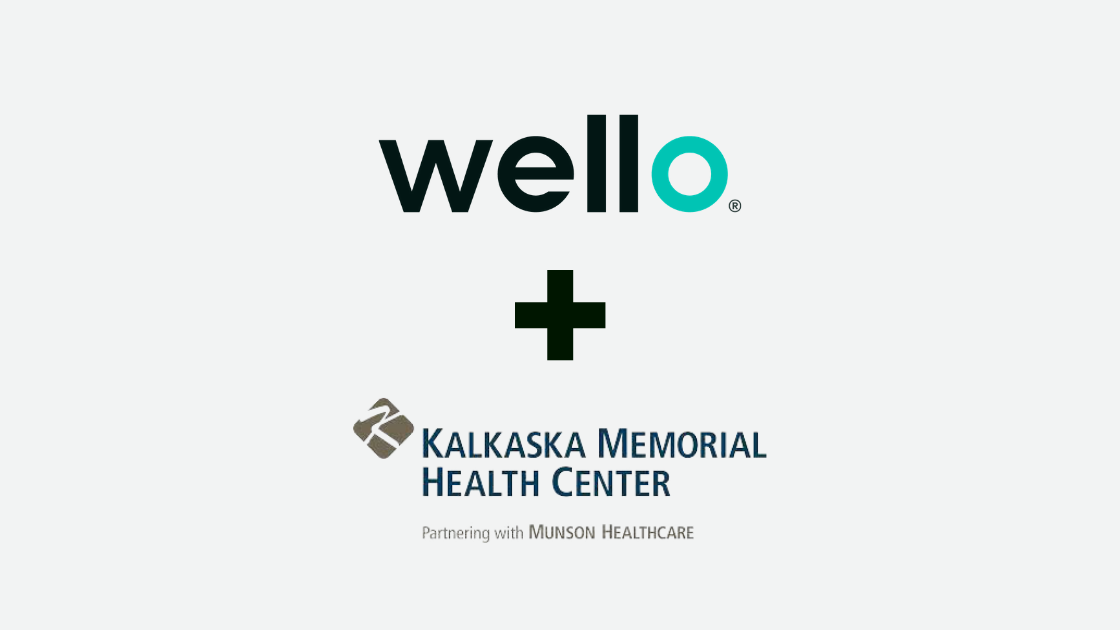The sun has slowly but surely started peeking through the clouds in the fight against the Covid-19 pandemic. Mass vaccine rollouts have led to dropping case numbers across the country, and restrictions are being lifted.
With these positive trends, many companies that have been fully remote since early 2020 are starting to explore transitioning back to an in-person work model.
Inevitably, people will have varying opinions on being asked to return to an office. Some will be ecstatic to escape the monotony of work-from-home, while others will dread a wrench being thrown into their now established remote routine. One thing is certain though, whether employees are looking forward to a return or dreading it, they will all expect their employers to take steps to ensure employee health and safety.
In this post, we will look at some actionable steps employers can take to mitigate risk of contagious illnesses being spread throughout the office. Some steps may be a better fit than others for certain organizations, and it’s not an all-or-none approach. Implementing even a single of the following suggestions will show employees that their well-being is a top priority.
A/B in-office work days
Companies may be eager to get all employees back in office full-time, but starting slowly with A/B groups is a good way to test the waters and ensure lower capacities. If taking an every other day approach, employees might get confused about which days they need to be in office. A simpler way of doing things is making Mondays and Wednesdays A-days, and Tuesdays and Thursdays B-days. Fridays can remain work-from-home days except on certain occasions.
By splitting employees into 50/50 groups for the first stages of back-to-office, it makes it easier to adequately space out employees and to identify which employees might have come in contact with a sick individual. Instead of having to keep everyone in the company at home due to possible exposure, only one group – or portion of the one group – would need to stay home.
Mask requirement
The CDC has advised that fully vaccinated individuals do not need to wear masks in almost all circumstances. The problem with this is it’s difficult to know and track who has been vaccinated. Unless a company is electing to require employees to be vaccinated and show proof, the safe bet is sticking with a mask requirement.

Aside from just Covid-19, the science is clear that masks help stop the spread of infectious disease. Making them a requirement in common areas, meeting rooms, bathrooms, and really anytime employees are away from their desks – which ideally are spaced 6ft apart – goes a long way towards keeping employees healthy and easing the nerves of those anxious about being around others.
Temperature and health screenings
It has become common practice for places like doctor’s offices, airports, government buildings, and even some restaurants to take people’s temperatures and perform a Covid questionnaire upon entry. And for good reason, as fever is the leading indicator of contagious illness. To safely bring employees back to the office, implementing a procedure like this is important.
While many establishments opt to bring in a 3rd party to handle the screenings in person, or even choose to pay an internal employee to do the screening manually, this is an expensive and short-sighted approach. The pandemic has opened the world’s eyes to the dangers of contagious illness and has made people warier than ever. A more affordable and long-term approach is an automated touchless temperature scanning station like welloStationX. Not only does the FDA-cleared station accurately take temperatures and conduct health-screening questionnaires, it can also automate employee temperature logs for instant reporting.
The pandemic has opened the world’s eyes to the dangers of contagious illness. By investing in a permanent temperature screening station, companies can show employees that they are dedicated to helping keep staff protected from exposure to potentially contagious individuals.
Permanent remote work options
Whether they are taking the above A/B approach or a flexible hybrid approach, many companies are looking at these tactics as a first step in getting people back in-person full time. While each company has their own reasons for wanting people in-office, it can be beneficial to have remote flexibility permanently.

Having permanent remote flexibility does not mean allowing employees to work from home full time, it just means extending the option occasionally. There are different ways to approach it. Companies can offer a certain number of remote days a week, month, or year to be taken at the employee’s discretion. Another option is an honor system approach where employees can take a remote workday under certain circumstances such as feeling under the weather – as long as the system isn’t abused.
The employee health and safety benefits from extending permanent remote options are clear, sick employees are much more likely to stay home and away from others if they are not forced to take a PTO day. Gone are the days of “toughing it out”. Sick employees need to stay home, and this is one way to help ensure they do so.
A culture of understanding
The reality of the situation at hand is that Covid-19 changed the world, and the past year and a half have been incredibly hard on a lot of people – physically and emotionally. No matter how thorough companies are about taking steps to help employees feel safe from a physical health perspective, some people will still have heightened anxiety and fear.
It’s important to remember that employees have settled into their new routines, and they may have social anxiety about being around, and having to interact face-to-face, with co-workers once again. The best approach is working with employees individually and being understanding of individual situations. Showing employees they are cared for and important is an invaluable step to helping return-to-office go smoothly.


